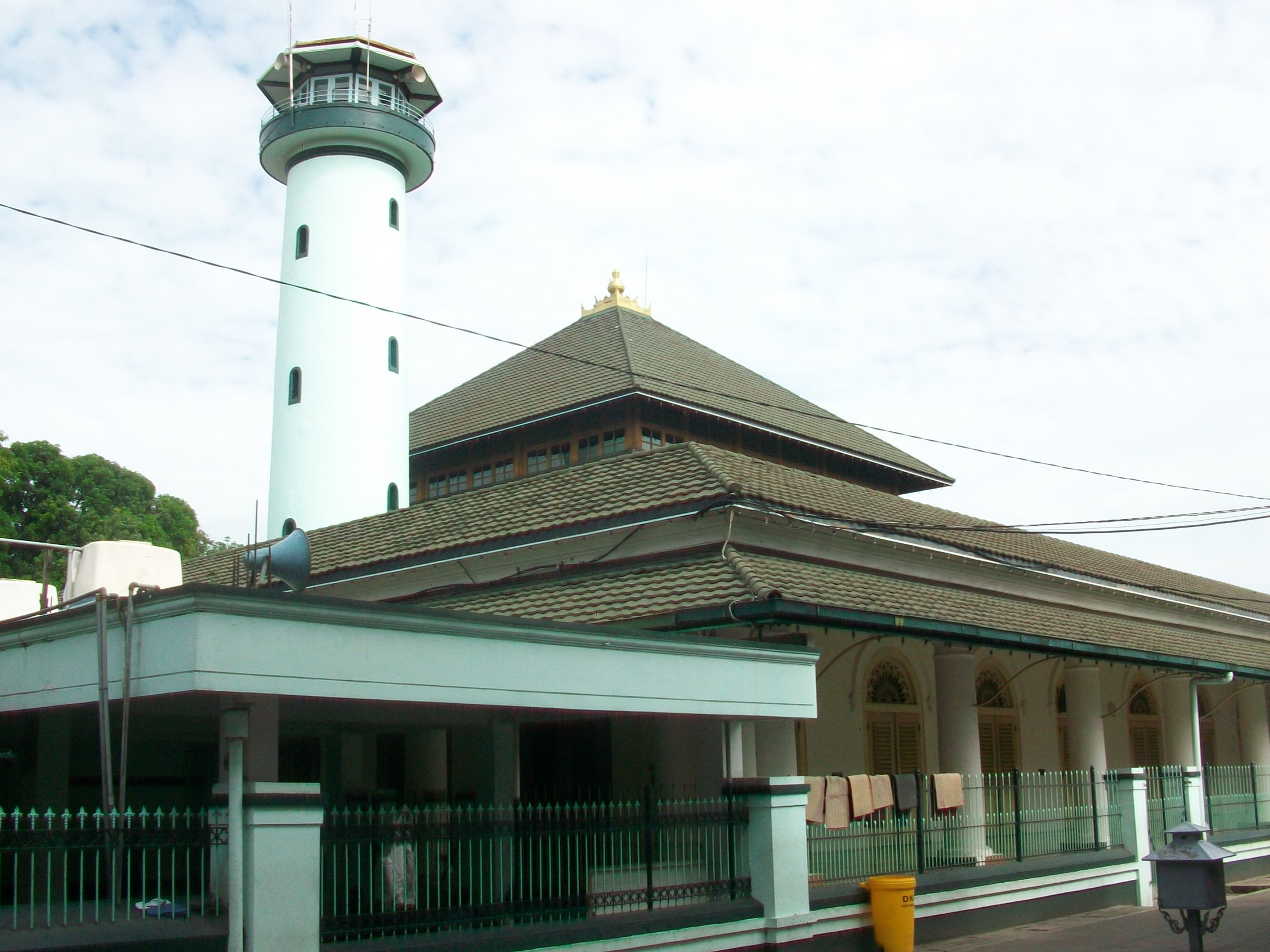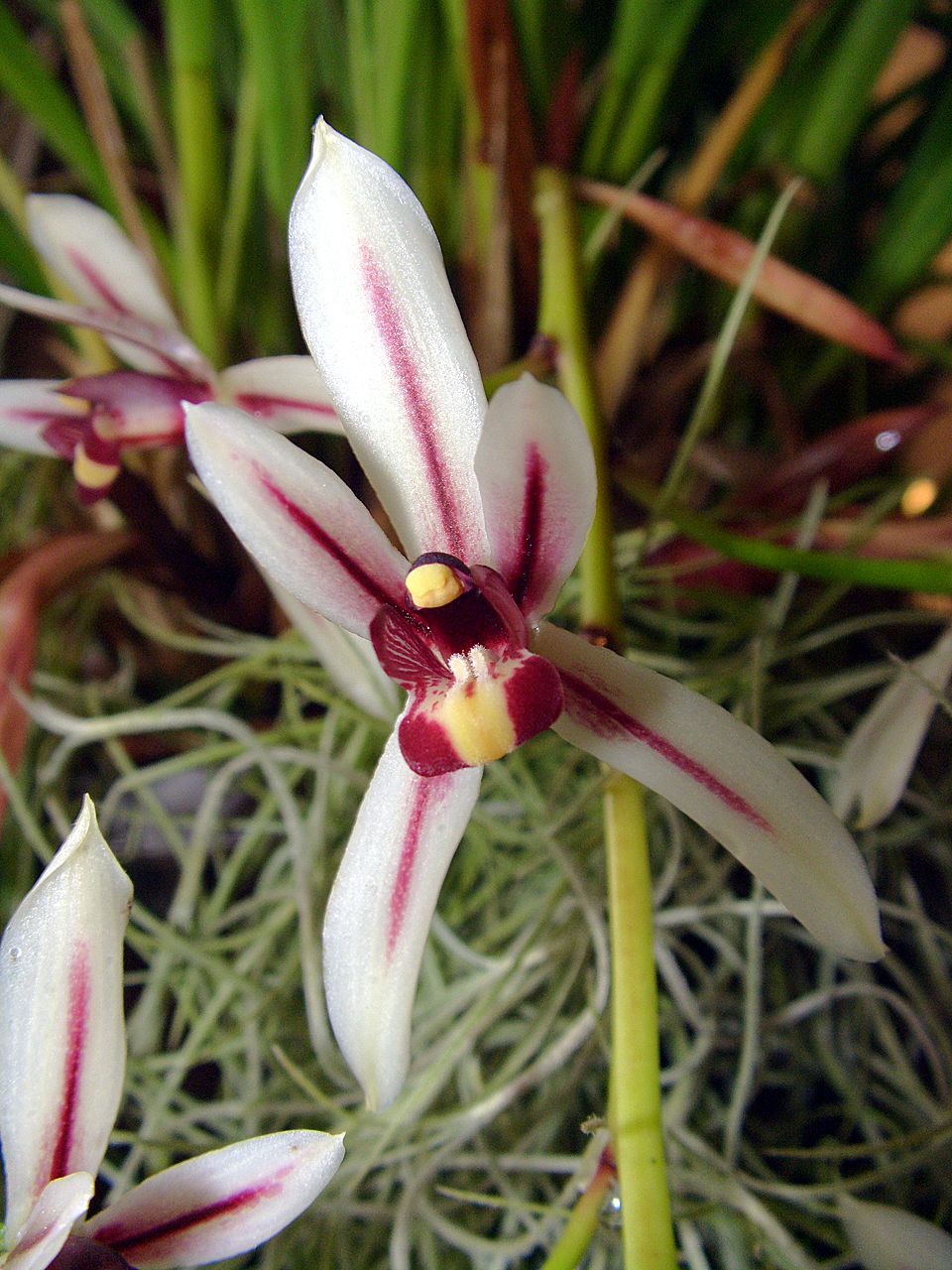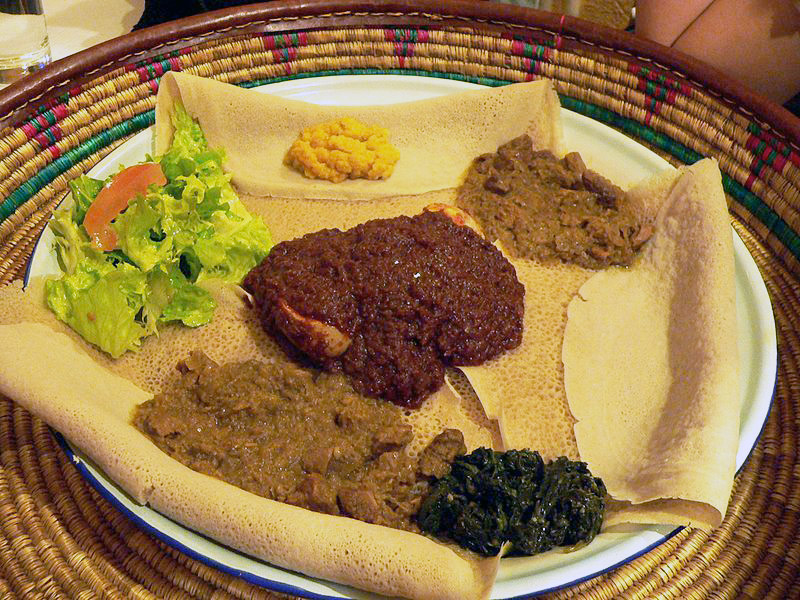|
Wingko
Wingko, wiwingka or bibika, which is sometimes called wingko babat, wiwingka or bibika (rev. De voeding in Nederlands-Indië 1904), is a traditional Indonesian pancake-like snack made from coconuts. This '' kue'' is usually associated with Javanese cuisine. Wingko is a type of cake made mainly of coconut and other ingredients. Wingko is popular especially along the north coast of Java island. It is mostly sold by peddlers on trains, at bus, train stations, or in the producer's own shop. This might explain its popularity in Java as a gift to families upon returning from traveling. Wingko is typically a round, almost hard coconut cake that is typically served in warm, small pieces. Wingko is sold either in the form of a large, plate-sized cake or small, paper wrapped cakes. The most famous wingko is made in Babat. As its full name, wingko babat, suggests, wingko actually originated in Babat, a small district in Lamongan regency in East Java, near the border with the regency ... [...More Info...] [...Related Items...] OR: [Wikipedia] [Google] [Baidu] |
Bibingka
''Bibingka'' (; ) is a type of baked rice cake in Filipino cuisine that is cooked in a terracotta oven lined with banana leaves and is usually eaten for breakfast or as merienda (mid-afternoon snack), especially during the Christmas season. It is also known as ''bingka'' in the Visayas and Mindanao islands. Bibingka can also be various other Filipino baked rice cakes, for example, those made with cassava flour (''bibingkang cassava / bibingkang kamoteng kahoy''), glutinous rice (''bibingkang malagkit''), or plain flour. Etymology The origin of the name is unknown. The linguist Robert Blust hypothesizes that it was originally a loanword, likely from Malay language, Malay ''kue bingka, [kue] bingka''. However, the consistent partial reduplication of the word (''bibingka'') in most Philippine languages, is unexplained. In Macau and Portuguese Goa, there exist also a cake called Bebinca. ''Bibingka'' is the name used for the dish in most languages of the Philippines, including ... [...More Info...] [...Related Items...] OR: [Wikipedia] [Google] [Baidu] |
East Java
East Java (, , ) is a Provinces of Indonesia, province of Indonesia located in the easternmost third of Java island. It has a land border only with the province of Central Java to the west; the Java Sea and the Indian Ocean border its northern and southern coasts, respectively, while the narrow Bali Strait to the east separates Java from Bali by around . Located in eastern Java (island), Java, the province also includes the island of Madura Island, Madura (which is connected to Java by the longest bridge in Indonesia, the Suramadu Bridge), as well as the Kangean Islands, Kangean islands and other smaller island groups located further east (in the northern Bali Sea) and the Masalembu Islands, Masalembu archipelago to the north. Its capital is Surabaya, the Largest cities in Indonesia, second largest city in Indonesia, a major industrial center and also a major business center. Banyuwangi is the largest regency in East Java and the largest on the island of Java. The province cover ... [...More Info...] [...Related Items...] OR: [Wikipedia] [Google] [Baidu] |
Kue Bingka
Kue bingka is an Indonesian traditional cake ( kue basah) that is one of the typical traditional Banjar kue mostly associated with South Kalimantan province, Indonesia. Kue bingka also found in Malay cuisine. It has a sweet taste and a soft texture. Kue bingka is one of the cakes used in the Banjar tradition to serve 41 types of cakes for special occasions such as weddings. Although it can be found throughout the year, kue bingka is usually common in Ramadan due to it is considered suitable for ''iftar''. Aside from being a typical Banjarese dessert, kue bingka is also famous in neighboring provinces such as East Kalimantan and Central Kalimantan, even to foreign countries such as Brunei, Malaysia and Singapore. Kue bingka was introduced by the Sino-Burmese to Lower Myanmar, where it is known as ''kway pinka'' (). Ingredients Kue bingka is made up of flour, eggs, coconut milk, sugar and salt. As a rule, kue bingka is baked with floral prints. There are various kinds of kue bi ... [...More Info...] [...Related Items...] OR: [Wikipedia] [Google] [Baidu] |
Javanese Cuisine
Javanese cuisine () is the cuisine of Javanese people, a major Native Indonesian, ethnic group in Indonesia in the provinces of Central Java, Yogyakarta, and East Java. Definition Javanese cuisine refers exclusively to the cuisine of Javanese people, which is often brought to other regions and countries by Javanese diaspora or foreign descents who have lived in Java. There are several native ethnic groups who live on the island of Java (Sundanese people, Sundanese, Madurese people, Madurese, Betawi people, Betawi, etc.) as well as other peoples of foreign descents. In Indonesian language, Javanese refers to people of Javanese ethnic background. Javanese cuisine is thought to be sweet, since this is the taste traditionally preferred in Yogyakarta. However, Javanese regions do not only include Yogyakarta. On the northern and northeastern of Central Java, for instance, the taste tends to be salty and spicy. In East Java, the level of spiciness increases. Today, as Javanese p ... [...More Info...] [...Related Items...] OR: [Wikipedia] [Google] [Baidu] |
Java
Java is one of the Greater Sunda Islands in Indonesia. It is bordered by the Indian Ocean to the south and the Java Sea (a part of Pacific Ocean) to the north. With a population of 156.9 million people (including Madura) in mid 2024, projected to rise to 158 million at mid 2025, Java is the world's List of islands by population, most populous island, home to approximately 55.7% of the Demographics of Indonesia, Indonesian population (only approximately 44.3% of Indonesian population live outside Java). Indonesia's capital city, Jakarta, is on Java's northwestern coast. Many of the best known events in Indonesian history took place on Java. It was the centre of powerful Hindu-Buddhist empires, the Islamic sultanates, and the core of the colonial Dutch East Indies. Java was also the center of the History of Indonesia, Indonesian struggle for independence during the 1930s and 1940s. Java dominates Indonesia politically, economically and culturally. Four of Indonesia's eig ... [...More Info...] [...Related Items...] OR: [Wikipedia] [Google] [Baidu] |
Coconut Desserts
The coconut tree (''Cocos nucifera'') is a member of the palm tree family (biology), family (Arecaceae) and the only living species of the genus ''Cocos''. The term "coconut" (or the archaic "cocoanut") can refer to the whole coconut palm, the seed, or the fruit, which botanically is a drupe, not a Nut (fruit), nut. Originally native to Central Indo-Pacific, they are now ubiquitous in coastal tropical regions and are a cultural icon of the tropics. The coconut tree provides food, fuel, cosmetics, folk medicine and building materials, among many other uses. The inner flesh of the mature seed, as well as the coconut milk extracted from it, forms a regular part of the diets of many people in the tropics and subtropics. Coconuts are distinct from other fruits because their endosperm contains a large quantity of an almost clear liquid, called "coconut water" or "coconut juice". Mature, ripe coconuts can be used as edible seeds, or processed for Coconut oil, oil and Coconut milk, ... [...More Info...] [...Related Items...] OR: [Wikipedia] [Google] [Baidu] |
Butter Mochi
Butter mochi is a cake made from coconut milk, glutinous rice flour (), sugar, butter, and eggs. It is a popular dessert in Hawaiian cuisine, where it is more popular than brownies are in the continental US. Having originated in Hawaii, it is an example of Hawaiian "Local Food". It has been described as "a combo of cake and mochi." Description Butter mochi combines textures and flavors of its two main influences, mochi and cake. It features a similar chewy ("Q") texture as mochi, but less pronounced through the addition of traditional cake ingredients such as eggs and butter as well as leavening introduced via baking powder. The specific proportions of butter, sugar, eggs, and milk used in mochi determine the texture, which can approach in extremes that of custard or poundcake. Varying the milk used – fresh, evaporated, coconut, a combination – changes the flavor, sometimes resulting in nutty or caramel-like flavors. Unlike other mochi, Butter mochi is baked rather t ... [...More Info...] [...Related Items...] OR: [Wikipedia] [Google] [Baidu] |
Bojonegoro Regency
Bojonegoro Regency (, older spelling is ''Kabupaten Bodjanegara'', ) is a regency in East Java Province of Indonesia, about 110 km west of Surabaya and 73 km northeast of Ngawi. It covers a land area of 2,307.06 km2 (890.76 miles2) and is located in the inland part of the northern Java plain, mainly on the south bank of the Solo River, the longest river in Java. It had a population of 1,209,973 at the 2010 CensusBiro Pusat Statistik, Jakarta, 2011. and 1,301,635 at the 2020 Census;Badan Pusat Statistik, Jakarta, 2021. the official estimate as at mid-2023 was 1,363,058 (comprising 684,317 males and 678,741 females).Badan Pusat Statistik, Jakarta, 28 February 2024, ''Kabupaten Bojonegoro Dalam Angka 2024'' (Katalog-BPS 1102001.3522) The administrative centre of the regency is the town of Bojonegoro. Previously known as a major producer of teak and tobacco, Bojonegoro is a focus of attention in Indonesia as a new oil field has been found in this area. This oil fin ... [...More Info...] [...Related Items...] OR: [Wikipedia] [Google] [Baidu] |
Java Island
Java is one of the Greater Sunda Islands in Indonesia. It is bordered by the Indian Ocean to the south and the Java Sea (a part of Pacific Ocean) to the north. With a population of 156.9 million people (including Madura) in mid 2024, projected to rise to 158 million at mid 2025, Java is the world's most populous island, home to approximately 55.7% of the Indonesian population (only approximately 44.3% of Indonesian population live outside Java). Indonesia's capital city, Jakarta, is on Java's northwestern coast. Many of the best known events in Indonesian history took place on Java. It was the centre of powerful Hindu-Buddhist empires, the Islamic sultanates, and the core of the colonial Dutch East Indies. Java was also the center of the Indonesian struggle for independence during the 1930s and 1940s. Java dominates Indonesia politically, economically and culturally. Four of Indonesia's eight UNESCO world heritage sites are located in Java: Ujung Kulon National Par ... [...More Info...] [...Related Items...] OR: [Wikipedia] [Google] [Baidu] |
Lamongan Regency
Lamongan Regency () is a regency () of the East Java Province of Indonesia. It has a total land area of approximately or + 3.78% of the area of East Java Province. With a length of along the coastline (comprising Paciran and Brondong Districts), the sea area of Lamongan Regency is about , if calculated to a distance of across the ocean surface. At the 2010 census it had a population of 1,179,059;Biro Pusat Statistik, Jakarta, 2011. the 2020 Census produced a total of 1,379,628Badan Pusat Statistik, Jakarta, 2021. and the official estimate as at mid-2023 was 1,385,835 (comprising 694,803 males and 691,032 females).Badan Pusat Statistik, Jakarta, 2023, ''Kabupaten Lamongan Dalam Angka 2023'' (Katalog-BPS 1102001.3524) The regency seat is the town of Lamongan, situated on the Solo River which passes from west to east through the regency, effectively dividing it in two. There are three main geographic divisions. In the far south of the regency (Sukorame, Bluluk, Ngimbang, Samb ... [...More Info...] [...Related Items...] OR: [Wikipedia] [Google] [Baidu] |
Pancake
A pancake, also known as a hotcake, griddlecake, or flapjack, is a flat type of batter bread like cake, often thin and round, prepared from a starch-based Batter (cooking), batter that may contain eggs, milk, and butter, and then cooked on a hot surface such as a griddle or frying pan. Archaeological evidence suggests that pancakes were probably eaten in prehistoric societies. The pancake's shape and structure varies worldwide. In England, pancakes are often Leavening agent, unleavened and resemble a crêpe. In Scotland and North America, a leavening agent is used (typically baking powder) creating a thick fluffy pancake. A ''crêpe'' is a thin pancake of Brittany, Breton origin cooked on one or both sides in a special pan or crepe maker to achieve a lacelike network of fine bubbles. A well-known variation originating from southeast Europe is palatschinke, a thin moist pancake fried on both sides and filled with jam, cream cheese, chocolate, or ground walnuts, but many other f ... [...More Info...] [...Related Items...] OR: [Wikipedia] [Google] [Baidu] |







